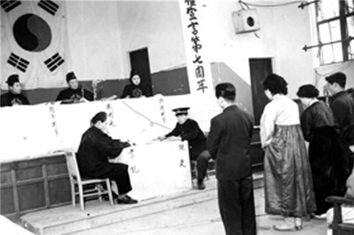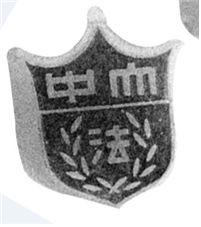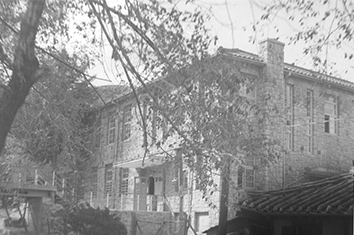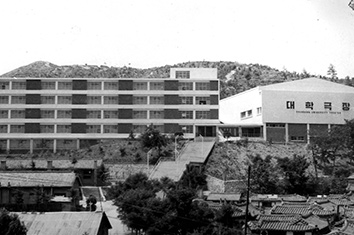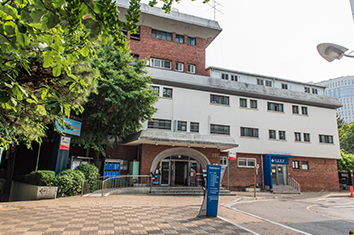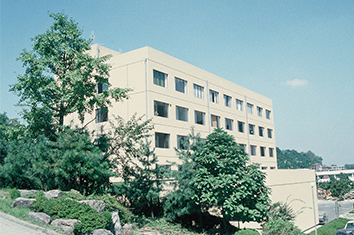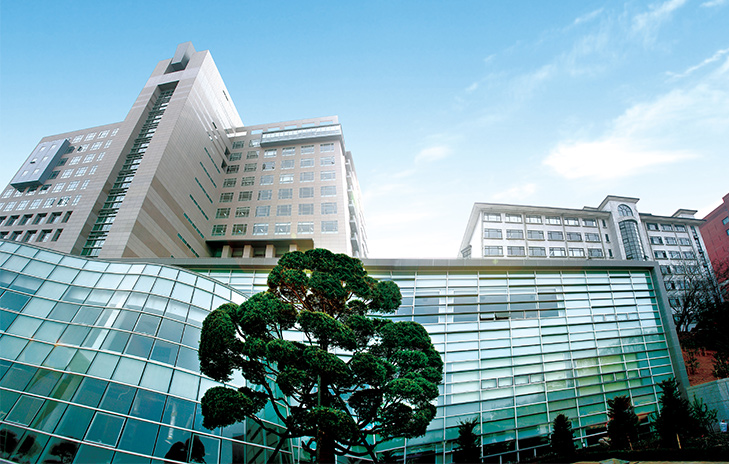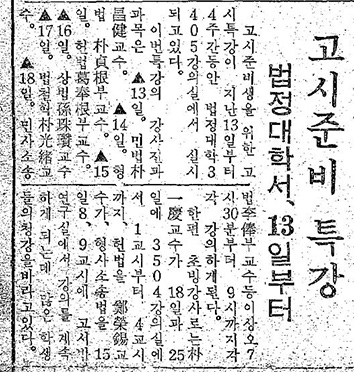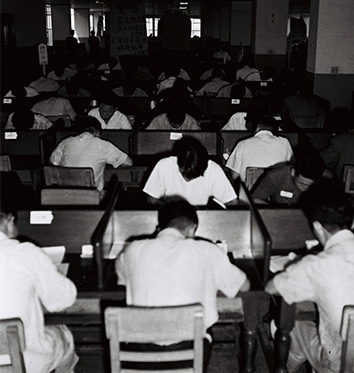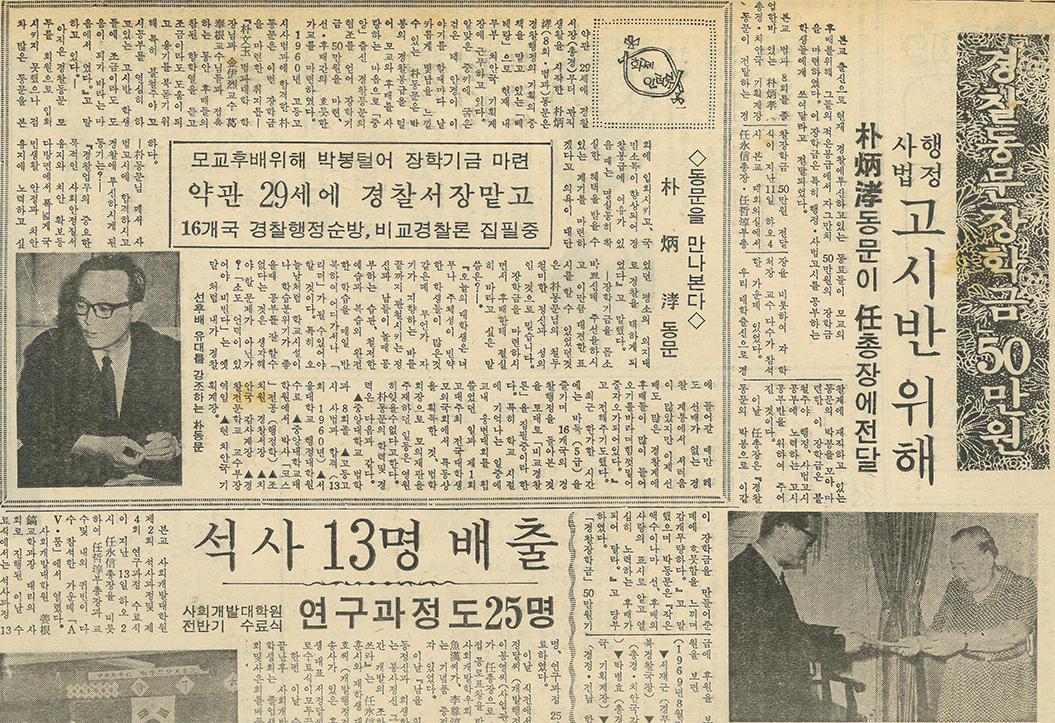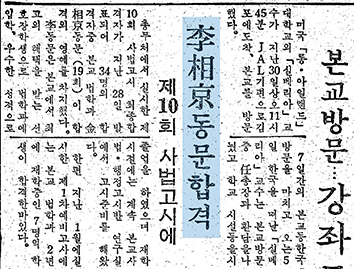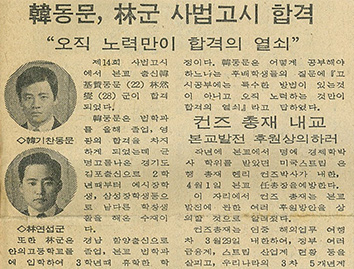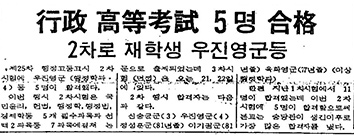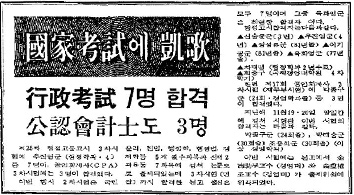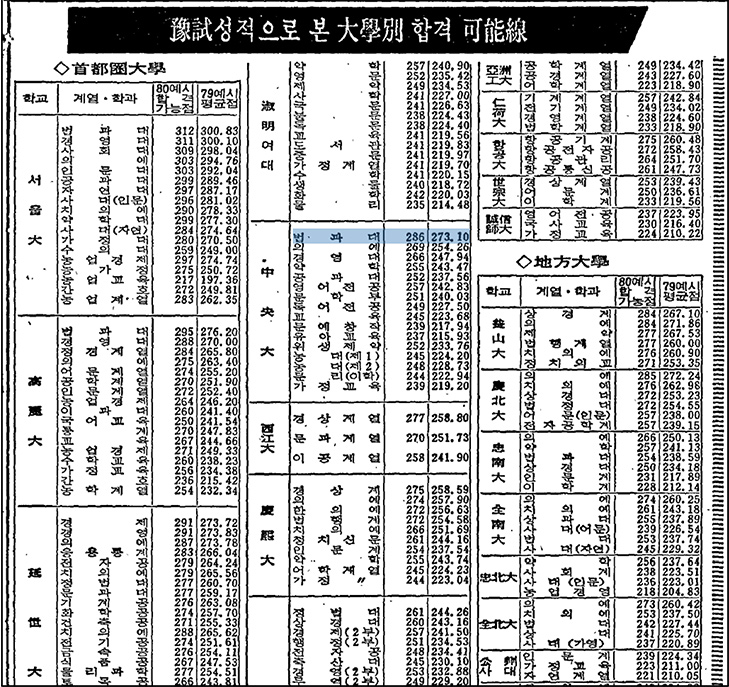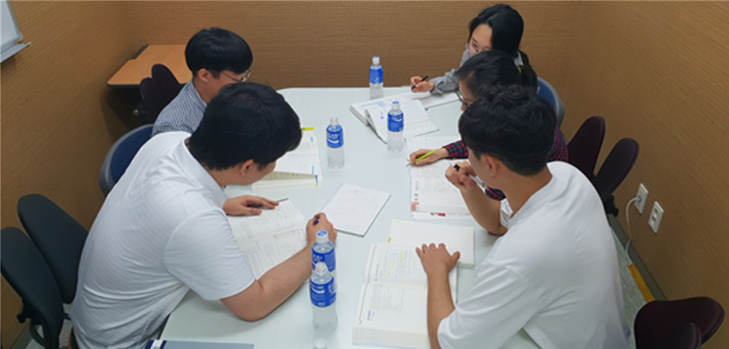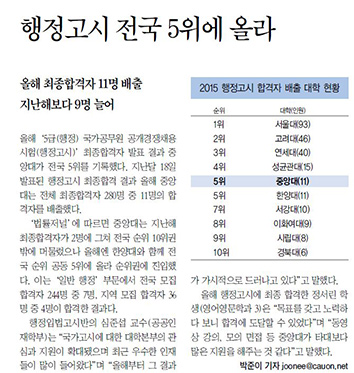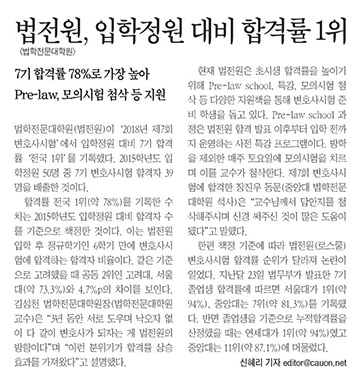Development Process of Departments of Law and Public Administration
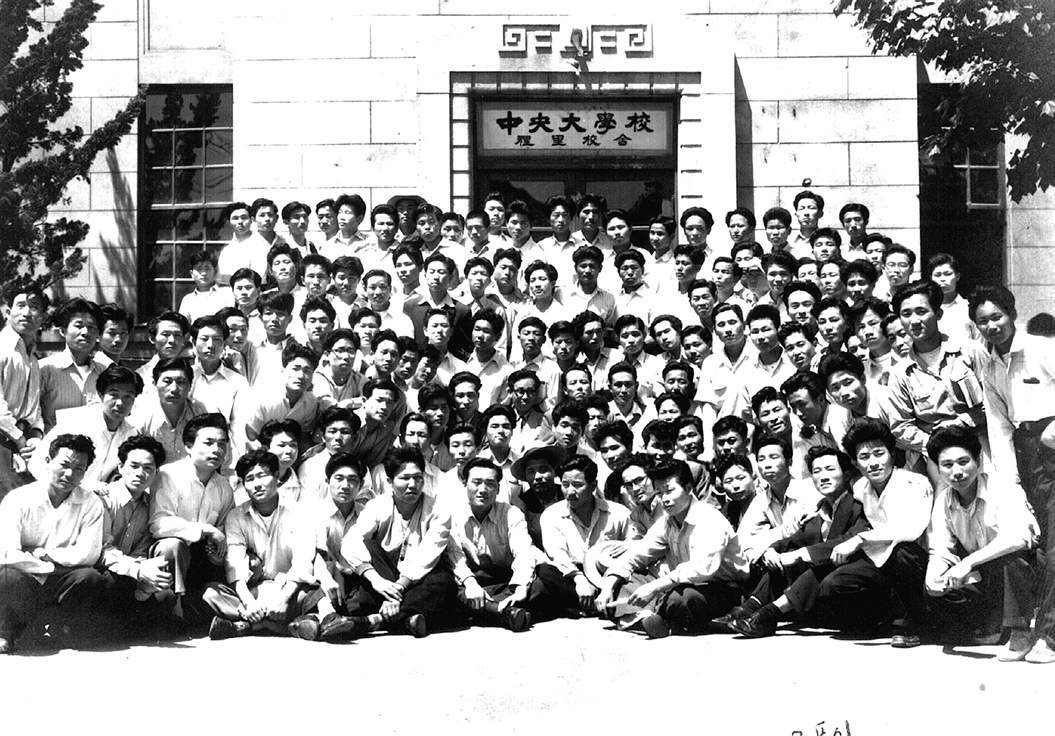 1
1
1Students of Department of Law, College of Laws & Politics, CAU at Branch Campus in Iksan, formally called Iri, in 1956
Back in the late 1940s, Korea was just liberated from the Japanese colonial rule and grappled with turning itself into a democratic nation. There was an urgent need for political and legal education not just to uphold a right to participate in the politics directly and indirectly, but nurture mature democratic citizens–basic building blocks of a law-governed country.
As part of an effort to meet the demand of the time, Chung-Ang Culture Institute, the educational Foundation of CAU, held a meeting of the board of directors in August 1948, where it decided to change the name of the College of Literature into the College of Laws & Politics and establish the Department of Laws and Politics. In October 1948, CAU first recruited entrants of the Department of Laws and Politics, and the maximum number that could be admitted to the department were 160. It was highly competitive, showing a ratio of seven to one.
CAU acquired the official approval for establishing the Department of Law & Politics from the Ministry of Education on May 24th, 1949. CAU started to construct Heerak Building in March 1949 to meet the increasing need for university facilities and advance to the status of comprehensive university. Construction of Heerak Building was completed on May 15th, 1950, just before the outbreak of the Korean War. Back then, students used this new building only for two weeks and had no choice but to move to a temporary university building in Songdo, Busan, evacuating from Seoul due to the war.
CAU spared no effort to offer high-quality legal education even in the middle of the Korean War. After branch campus in Iksan was opened on October 31st, 1951, Prof. Park Gwang-seo was in charge of Case Study in Legal Affairs, Legal History, History of Legal Thoughts, and Roman Law, and Prof. Park Chang-geon taught Case Study in Civil Law, Civil Law III, and Civil Law IV.
As part of an effort to meet the demand of the time, Chung-Ang Culture Institute, the educational Foundation of CAU, held a meeting of the board of directors in August 1948, where it decided to change the name of the College of Literature into the College of Laws & Politics and establish the Department of Laws and Politics. In October 1948, CAU first recruited entrants of the Department of Laws and Politics, and the maximum number that could be admitted to the department were 160. It was highly competitive, showing a ratio of seven to one.
CAU acquired the official approval for establishing the Department of Law & Politics from the Ministry of Education on May 24th, 1949. CAU started to construct Heerak Building in March 1949 to meet the increasing need for university facilities and advance to the status of comprehensive university. Construction of Heerak Building was completed on May 15th, 1950, just before the outbreak of the Korean War. Back then, students used this new building only for two weeks and had no choice but to move to a temporary university building in Songdo, Busan, evacuating from Seoul due to the war.
CAU spared no effort to offer high-quality legal education even in the middle of the Korean War. After branch campus in Iksan was opened on October 31st, 1951, Prof. Park Gwang-seo was in charge of Case Study in Legal Affairs, Legal History, History of Legal Thoughts, and Roman Law, and Prof. Park Chang-geon taught Case Study in Civil Law, Civil Law III, and Civil Law IV.
2Mock trial, held in 1957 to celebrate 7th anniversary of universal declaration of human rights
3Emblem of CAU College of Law
CAU changed the existing Department of Law & Politics (that consisted of Law major and Politics major) into the Department of Law in 1952. And afterwards in 1953, CAU reformed its school system, in which it transformed the School of Law & Literature (that was comprised of departments of Literature, Education, and Law) into the Faculty of Law & Politics (that consisted of departments of Law and Political Science). This once again changed into the College of Law & Politics in 1954 that included not only departments of Law and Politics, but also departments of Public Administration and Journalism. Later in 1968, the name of the College of Law & Politics changed into the College of Law that incorporated the Department of Public Administration.
In 1955, CAU established the Department of Public Administration under the College of Law & Politics for the first time among Korean private universities and for the third time among Korean universities. The Department of Public Administration was founded on Anseong Campus in 1983.
Departments of Law and Public Administration, consisting of outstanding faculty and students, faced a transformative change when CAU was designated as law school by the government. As a result, just as other universities with law school, CAU’s Department of Law no longer recruited new entrants from 2009. CAU recruited law school entrants and created the School of Open Major, instead. The university introduced the School of Public Service, the College of Public Service in 2009, and later in 2010, integrated the Department of Public Administration with the School of Open Major, resulting in today’s School of Public Service under the College of Social Sciences.
In 1955, CAU established the Department of Public Administration under the College of Law & Politics for the first time among Korean private universities and for the third time among Korean universities. The Department of Public Administration was founded on Anseong Campus in 1983.
Departments of Law and Public Administration, consisting of outstanding faculty and students, faced a transformative change when CAU was designated as law school by the government. As a result, just as other universities with law school, CAU’s Department of Law no longer recruited new entrants from 2009. CAU recruited law school entrants and created the School of Open Major, instead. The university introduced the School of Public Service, the College of Public Service in 2009, and later in 2010, integrated the Department of Public Administration with the School of Open Major, resulting in today’s School of Public Service under the College of Social Sciences.



